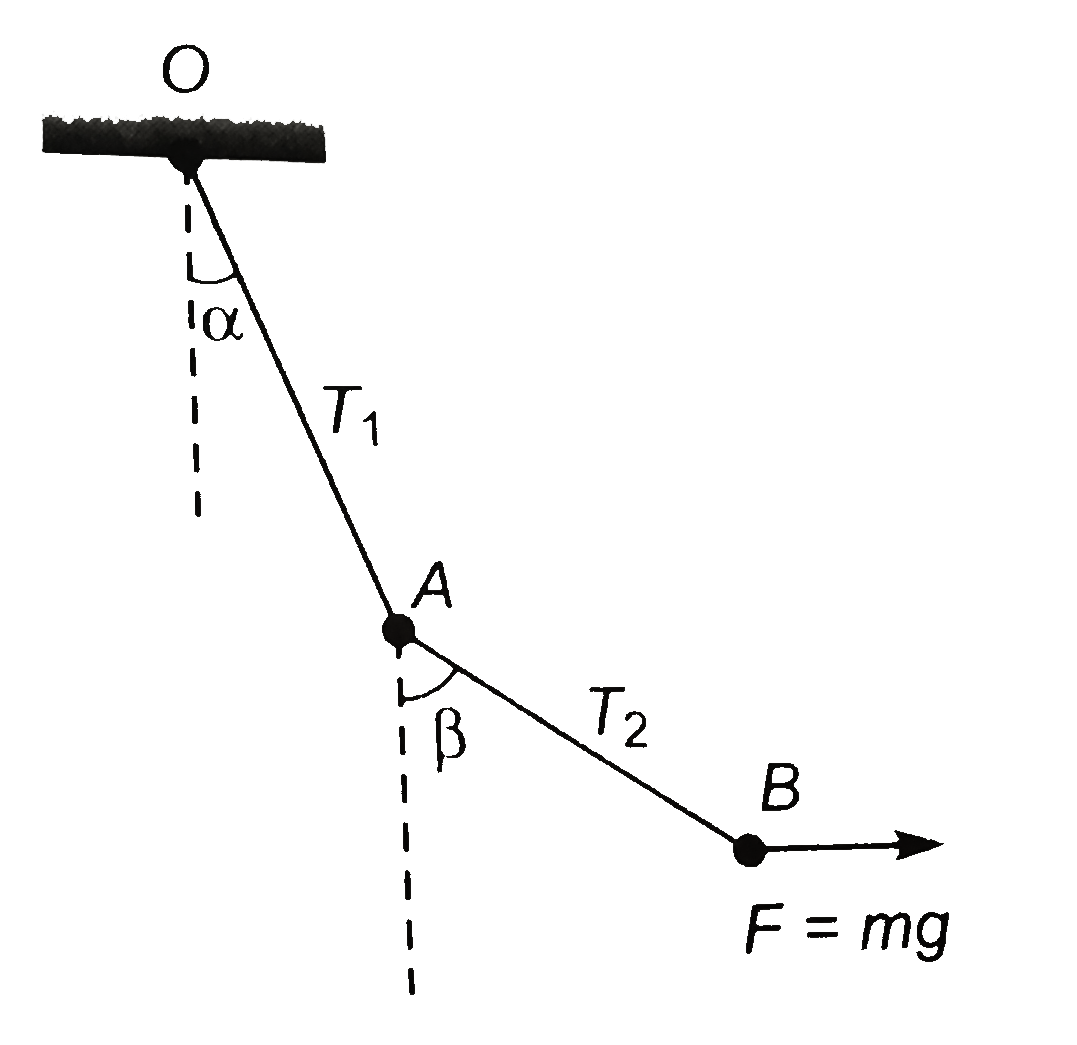The density of a rod AB continuously increases from A to B. Is it easier to set it in rotatio by clamping ilt at A and applying a perpendicular force at B or by clamping it at B and applying the force at A?
Step by step video & image solution for The density of a rod AB continuously increases from A to B. Is it easier to set it in rotatio by clamping ilt at A and applying a perpendicular force at B or by clamping it at B and applying the force at A? by Physics experts to help you in doubts & scoring excellent marks in Class 11 exams.
Updated on:21/07/2023Topper's Solved these Questions
- ROTATIONAL MECHANICSBOOK - HC VERMA ENGLISHCHAPTER - ROTATIONAL MECHANICSEXERCISE - Exercises
86 Videos
- REST AND MOTION : KINEMATICSBOOK - HC VERMA ENGLISHCHAPTER - REST AND MOTION : KINEMATICSEXERCISE - Question for short Answer
13 Videos
- SIMPLE HARMONIC MOTIONBOOK - HC VERMA ENGLISHCHAPTER - SIMPLE HARMONIC MOTIONEXERCISE - Question for short Answer
15 Videos
Similar Questions
The density of a rod continuously increases from A to B. It is easier to set it into rotation by
View SolutionThe density of a rod AB increases linearly from A to B its midpoint is O and its centre of mass is at C. four axes pass through A, B, O and C, all perpendicular to the length of the rod. The moment of inertial of the rod about these axes are IA,IB,IO and IC respectively.
View SolutionThe adjacent figure shows a non-uniform metre stick AB having the linear mass density variation λ=λ0x , where λ0 is a constant and x is the distance from end A, placed on a smooth horizontal surface. In the first experiment, the rod is pivoted at A and force F is applied perpendicular to the rod at the other end B and in the second experiment, the rod is pivoted at B and the force is applied perpendicular to the rod at the end A. If in the first case angular acceleration is αA and in the second case it is αB then

View Solutionin which fo the following cases the centre of mass of a rod is certainly not at its centre?
(A) The density continuously increases from left ot right
(B) The density continuously decreases from left to right
(C) The density decreases from left to right up to the centre and then increases
(D) The density increases from left to right up to the centre and then decreases
Select correct alternative.
View SolutionA thin uniform rod AB of mass m and length L is placed on a smooth horizontal table. A constant horizontal force of magnitude F starts acting on the rod at one of the ends AB, Initially, the force is perpendicular to the length of the rod. Taking the moment at which force starts acting as t=0, find.
(a) Distance moved by centre of mass of the rod in time t0.
(b) Magnitude of initial acceleration of the end A of the rod.
View SolutionState the condition when on applying a force, a body has:
(a) translational motion, (b) rotational motion
View SolutionTwo particalA and B each of mass m are kept stationary by applying a horizontal force F=mg on partical B as show in figure .Then

View SolutionA constant force acts on object of mass 5 kg for a duration of 2s It increases the object's velocity from 3m/s to 7m/s Find the magnitude of the applied force. Now if the force were applied for a duration of 5s what would be the final velocity of object?
View SolutionA straight rod AB of mass M and length L is placed on a frictionless horizontal surface. A force having constant magnitude F and a fixed direction start acting at the end A. The rod is initially perpendicular to the force. The initial acceleration of end B is
View SolutionIn a simple Atwood's machine, two unequal masses m1=5kg , m2=2kg are connected by a string going over a clamped light smooth pulley. Now a constant force F = 1 N is applied on each mass in vertically downward direction. The ratio of acceleration of either block before and after applying the force will be
View Solution
